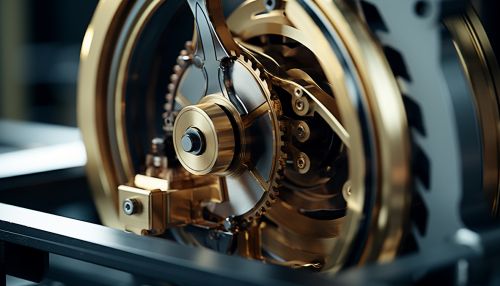Mechanical Energy
Introduction
Mechanical energy is a form of energy that is associated with the motion and position of an object. It is a fundamental concept in physics and is one of the most widely used forms of energy in our daily lives. Mechanical energy can be either kinetic energy, which is energy due to an object's motion, or potential energy, which is stored energy due to an object's position or state.


Types of Mechanical Energy
There are two main types of mechanical energy: kinetic energy and potential energy. These two types of energy can be converted into each other, and this conversion is a fundamental aspect of many physical systems.
Kinetic Energy
Kinetic energy is the energy of motion. An object that is moving has kinetic energy. The amount of kinetic energy an object has depends on its mass and its speed. The formula for kinetic energy is KE = 1/2 mv^2, where m is the mass of the object and v is its velocity.
Potential Energy
Potential energy is the energy that an object has because of its position or state. There are several types of potential energy, including gravitational potential energy, elastic potential energy, and chemical potential energy. The amount of potential energy an object has depends on its position or state and the forces acting upon it.
Conservation of Mechanical Energy
The principle of conservation of energy states that energy cannot be created or destroyed, only transferred or transformed. In the case of mechanical energy, this principle is often applied in the form of the law of conservation of mechanical energy. This law states that the total amount of mechanical energy in a closed system remains constant if only conservative forces are acting on the system.
Applications of Mechanical Energy
Mechanical energy is used in a wide variety of applications, from simple machines like levers and pulleys to complex systems like automobiles and power plants. Understanding the principles of mechanical energy is essential for the design and operation of these systems.
In Simple Machines
Simple machines are devices that change the direction or magnitude of a force. They use mechanical energy to do work. Examples of simple machines include the lever, the pulley, the wheel and axle, the inclined plane, the wedge, and the screw.
In Complex Systems
Complex systems, like automobiles and power plants, also use mechanical energy. In an automobile, for example, the chemical potential energy in the fuel is converted into mechanical energy to move the car. In a power plant, mechanical energy is used to generate electricity.
